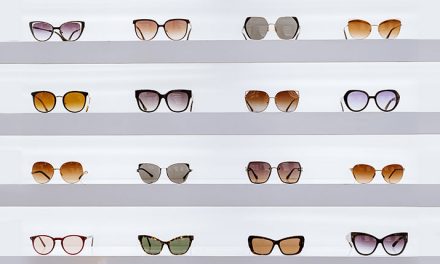For most of us, the eyes are the most cherished of our senses. Yet we potentially expose them to danger simply by going outside. Over time, the sun’s rays can seriously damage the eyes and surrounding skin, sometimes leading to vision loss and conditions from cataracts and macular degeneration to eye and eyelid cancers.
However, simple daily protective strategies will help keep our eyes and the sensitive skin around them healthy.
Ultraviolet A and Ultraviolet B light: Ultraviolet A (UVA) and ultraviolet B (UVB), powerful, invisible rays with wavelengths shorter than visible light, are the most dangerous parts of sunlight. They can cause cataracts, eyelid cancers and other skin cancers and are believed to play a part in macular degeneration, a major cause of vision loss for people over age 60. In addition, UV rays can prematurely wrinkle and age the skin around the eyes.
High-Energy Visible Light (HEV light)/Blue Light: HEV light – high-energy visible light in the violet/blue spectrum is a potential contributor to cataracts and other serious eye maladies. Blue light can damage the retina over time, leading to macular degeneration. The retina is the membrane where images are formed and transmitted to the brain. The macula, the region of sharpest vision located near the center of the retina, is the most likely area to be damaged.
How sunlight damages our eyes
Although designed to protect the eye, the eyelid’s skin is thin and contains many fragile tissues vulnerable to UV light. Inside the eye, the lens and cornea, both transparent, filter UV rays, but years of UV absorption can damage them. The lens, the eye’s focusing mechanism, can turn yellowish which are called cataracts. The cornea, the area in front at the outer layer of the eye, admits light and images to the retina. UV damage can cause many different cancers plus cataracts or macular degeneration.
Best Defense
Lenses that absorb/block UV offer strong defense against eye and eyelid damage. It’s best to wear sunglasses year-round in the sun. UVA light can damage the eyes and the skin around them throughout the year. Even on overcast days, UV can penetrate through clouds and haze.
For proper protection, sunglasses should offer the following:
- The ability to absorb and block 99 to 100 percent of UVA and UVB light. Ideally, they should also guard against HEV light.
- Sufficient size to shield the eyes, eyelids, and surrounding areas. The more skin covered, the better. Wraparound styles with a comfortable, close fit and UV-protective side shields are ideal.
- Durability and impact resistance.
- Polarized lenses to eliminate glare, especially when driving, but also out in the snow or on the water, where reflection greatly magnifies glare. Continuing glare can cause fatigue, headaches, and even migraines.





